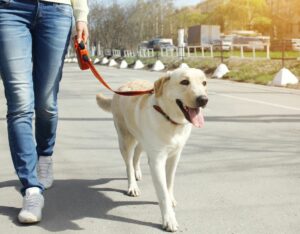
Lab walking in the city
So you would think ideally, dogs who can’t cope in close quarters wouldn’t be brought into high-density living situations in the first place. Unfortunately, that isn’t always the case. Since we can’t always predict some issues in a dog, or puppy when exposed to new people or unknown dogs we need to avoid incidents that can cause having a traumatic experience. Some simple dog training basics, and rules for the high-rise residents can help, here are a few suggestions to start with:
- Owners must go through the doors ahead of their dog, including and especially elevator doors.
- One dog per elevator car would be great. Most likely this cant be possible, so training your dog to go to a designated spot in the elevator. A good spot would be in the farthest corner away from the door, and dog should be on a short leash in a down or sit position.
- After pushing the elevator button, step back away from the door to give room to the dogs coming out of the elevator. A good 10 feet would be enough room to allow dogs on leash to come out.
- Dogs must be leashed in public, short leashed when walking through the halls, elevators and stairways.
- Teach your dog to sit & wait at the doors, including elevators.
- Teach your dog a good check in (eye contact) when walking through the hall and getting into an elevator.
- Be a good advocate for your dog, ask for a little space when needed.
Asking for space so your dog doesn’t have to. Don’t be afraid to speak up, or ask if a person with another dog can wait to get on the next elevator, or if they can give you a little space to get off while they take this one.
There is so much more on this subject but thought I would keep it short and start with some basic suggestions. Feel free to share your ideas.

Interesting
Excellent suggestions, Yoanka. Your comments are insightful and make a lot of sense.
Thank you!!!
Awesome, thanks for your share
Do you have any suggestions for creating articles? That’s where I always battle and
also I simply wind up gazing vacant display for very long time.
Honestly I feel like Im in the same boat, its not easy to take the time to write but I know it can be helpful for clients.